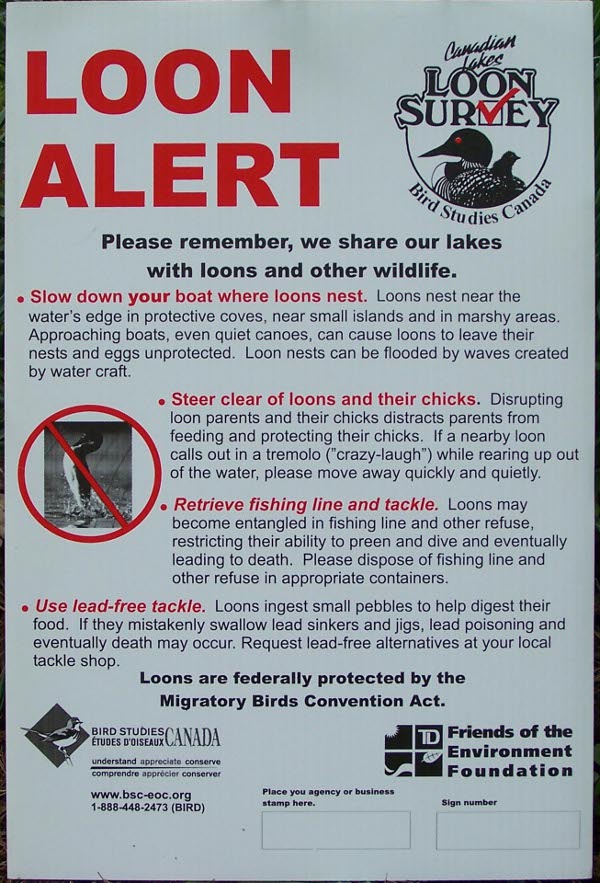|
Clear Lake is lucky to have a pair of loons who return to our lake each year to
have their young. So long as the lake is hospitable, loons will return year
after year. It is important that we work together to keep the lake a home the
loons want to return to.
The Common Loon is the most widespread and well-known species of loon. Loons are
reported to be among the oldest groups of birds still living today, with a
history some think stretches back more than 50 million years.

However, their present challenges may well be the most severe they have faced
throughout that long period. Human activities have decreased the abundance and
the breeding range of Common Loons in North America over the past 150 years.
The legs of loons are placed far back on the body, making loons powerful
swimmers but virtually helpless on land. Nests are typically built right at the
water's edge for ease of access and to provide a quick escape from perceived
danger. Cottages built close to the shore displace loons from their traditional
nesting sites. Damming for flood control or hydroelectric power causes water
level changes that swamp nests or leave them stranded high out of the water and
unreachable. Powerboaters often unknowingly run down buoyant loon chicks, panic
parents and disrupt care and feeding of young, or create wakes that wash loon
eggs out of nests.
Predation of eggs and chicks is a natural occurrence and something loons have
lived with throughout their long history. However, populations of some egg and
chick predators like raccoons, bears and gulls have increased because of the
availability of human garbage.
However, there are simple steps you can take to make our lake a loon friendly
lake: maintain a well vegetated, natural shoreline; be a responsible boater;
manage angling gear; and discourage nest predators such as raccoons, skunks,
and bears.
Loon Facts
-
loons are able to dive up to 60 metres due to the fact that their bones are
solid (most birds have lighter, hollow bones).
-
loons can live up to 30 years due to their place at the top of the food chain.
-
loons lay only 2-3 eggs a year.
-
loons are fish eaters so they suffer when fish populations drop.
-
loons are very clumsy on land because their feet are placed too far back on
their body for balanced walking.
-
loons build their nest on the water's edge for easy access.
-
five species of loon exist in the world - Common loon, Yellow-billed loon,
Red-throated loon, Arctic loon, and Pacific loon.
-
80% of the world's Common loon are found in Ontario lakes.
-
loons are migratory and spend the winter months along the coast of Maine,
through to the Gulf of Mexico, and from the Gulf of Alaska to Baja California.

|































